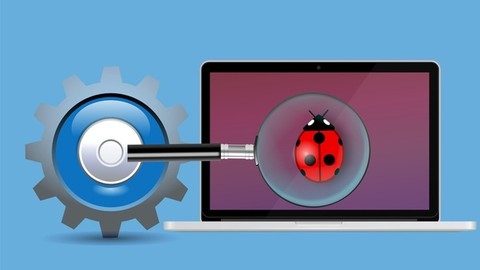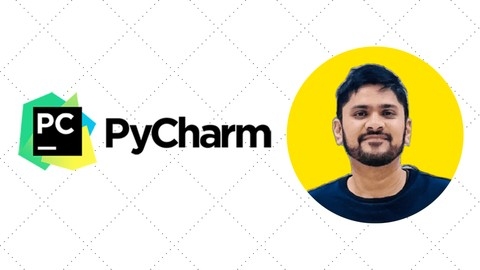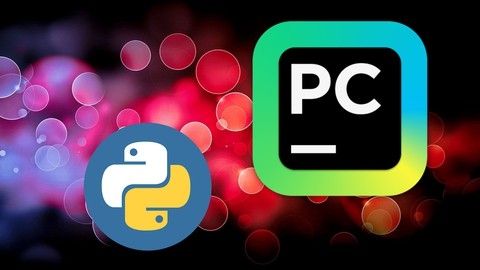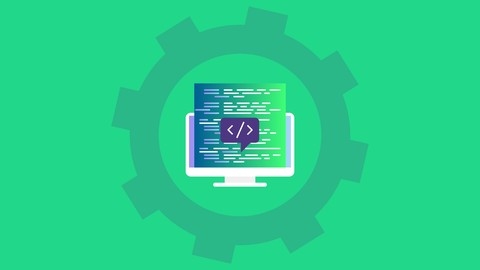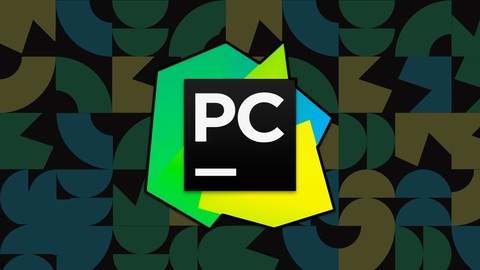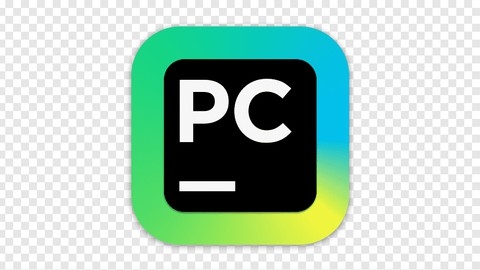PyCharm is a powerful IDE (Integrated Development Environment) specifically designed for Python developers.
It offers a wide range of features that can significantly boost your productivity and efficiency, from intelligent code completion and error highlighting to debugging tools and version control integration.
Mastering PyCharm can elevate your Python development skills and make you a more efficient programmer.
Finding the right PyCharm course on Udemy can be a daunting task, with so many options available.
You’re looking for a program that’s comprehensive, engaging, and taught by experts, but also fits your learning style and goals.
You want a course that can help you unlock the full potential of PyCharm, making you a productive Python developer.
For the best PyCharm course overall on Udemy, we recommend Master Pycharm IDE | Become a Productive Python developer.
This comprehensive course covers everything from setting up PyCharm and customizing it to your needs to mastering keyboard shortcuts, refactoring techniques, and efficient navigation.
It also delves into essential topics like Git integration and debugging, equipping you with all the skills needed to excel as a Python developer.
This is just one of many great PyCharm courses available on Udemy.
Keep reading to explore our full list of recommendations, categorized by learning style and specific skill areas, to find the perfect course for your needs.
Master Pycharm IDE | Become a Productive Python developer
You’ll start by learning how to set up Python and PyCharm on your system, whether you’re using Mac or Windows.
This ensures you have the right tools for an optimal coding experience.
Once you’ve got the setup covered, the course dives deep into exploring PyCharm’s features.
You’ll learn how to customize the IDE’s appearance by changing fonts, themes, and window layouts to suit your preferences.
This personalization can boost your productivity and make coding more enjoyable.
Speaking of productivity, the course teaches you how to use PyCharm without a mouse, mastering keyboard shortcuts and editor tricks.
You’ll discover techniques like auto-importing, removing unused imports, duplicating lines, and expanding selections, all designed to streamline your coding workflow.
But the real power lies in PyCharm’s refactoring capabilities, and this course covers them extensively.
You’ll learn how to refactor code, change function signatures, convert packages to modules, extract methods for better readability, and more.
These skills are invaluable for maintaining clean, maintainable code.
Navigating and searching within files and projects is also a crucial aspect covered in the course.
You’ll learn how to efficiently navigate through source files, search for specific code snippets, and leverage PyCharm’s powerful search features.
Version control is an essential part of any development process, and the course teaches you how to use Git within PyCharm.
You’ll learn how to configure Git, clone projects, commit changes, and collaborate with others using version control.
Debugging is another critical skill, and the course dedicates a section to it, showing you how to effectively debug your Python code using PyCharm’s debugging tools.
Finally, the course covers working with tests in PyCharm, ensuring you can write and run tests for your Python projects with ease.
Learn Python Debugging With PyCharm IDE
You’ll start by setting up your environment with Python and PyCharm installations, covering both the Community and Professional editions.
The course dives deep into PyCharm’s basic and advanced debugging features.
You’ll learn how to place breakpoints, control program execution, inspect variables, change values during debugging, and use smart step-into and run-to-cursor features.
Additionally, you’ll explore conditional breakpoints, exception breakpoints, and attaching the debugger to local processes.
Moving forward, you’ll gain insights into advanced topics like using frames, preventing stepping into libraries, and managing breakpoints effectively.
The course also covers debugging web applications like Django and Flask, as well as Jupyter Notebooks from the PyCharm Professional Edition.
You’ll even learn remote debugging using SSH interpreters and debugging within Docker containers.
But the real highlight is the hands-on problem scenarios and solutions.
You’ll tackle simple problems like BMI calculation, buying candies, calculating scores, coin tosses, and finding books.
As you progress, you’ll dive into more advanced scenarios like prime dates, printing pyramids, multi-threaded downloads, modifying Pandas data, generating zigzag sequences, and even a Flask CRUD application.
Throughout the course, you’ll receive guidance on important points to note before debugging, as well as key strategies to follow during the debugging process.
This practical approach ensures you gain a solid understanding of Python debugging with PyCharm.
PyCharm IDE Crash Course
You’ll begin by learning how to install PyCharm on different operating systems like Windows, Mac, and Linux.
This ensures you can follow along regardless of your platform.
Once installed, you’ll configure the Python interpreter and set up essential libraries like NumPy, Pandas, Matplotlib, Seaborn, SciPy, and even PyGame.
These libraries are crucial for data analysis, visualization, and game development.
It also teaches you how to customize PyCharm to your liking.
You’ll learn how to set a dark theme, change fonts, rename projects, and increase the font size of the editor.
These personalization options make PyCharm more comfortable to use, especially during long coding sessions.
Keeping your development environment up-to-date is also covered.
You’ll learn how to update Python libraries and even PyCharm itself on Windows.
This ensures you’re always working with the latest versions and taking advantage of new features and bug fixes.
These are essential tools for any Python developer or data scientist.
The course is structured in a logical and easy-to-follow manner, guiding you through each step with clear explanations and practical examples.
Master Pycharm IDE - PyCharm for Power-Developer
The course starts by introducing you to PyCharm, a powerful Python IDE.
You’ll learn how to install it and write basic programs using its features like shortcuts, Omni, and macros.
From there, the course dives into integrating different technologies with PyCharm.
You’ll learn how to work with HTML, CSS, and JavaScript within the IDE.
Additionally, you’ll gain experience adding databases and exporting data.
The highlight of the course is the Tic-Tac-Toe game development project using Tkinter for the GUI.
You’ll get an introduction to the project and learn about the Tkinter libraries used for creating windows, canvas, labels, entries, functions, and buttons.
The course walks you through configuring windows, integrating multiple windows, and handling button click events.
Throughout the project, you’ll write code to bring the Tic-Tac-Toe game to life.
This course goes from basic PyCharm usage to advanced project development.
You’ll gain hands-on experience with various technologies and learn how to integrate them within the PyCharm environment.
PyCharm Mastery: From Code Creation to Web Applications
This course starts with an introduction to PyCharm, covering its fundamentals, comparing it to other IDEs, and exploring the differences between the Professional and Community editions.
You’ll learn how to customize PyCharm’s theme, editor, and keyboard shortcuts to optimize your workflow.
The course walks you through creating and importing projects, navigating the project window, and installing packages.
One of the key focuses is on elevating your coding efficiency with PyCharm’s powerful features like code completion, refactoring tools, and documentation generation.
You’ll learn how to leverage code inspection, renaming, inline variables, and method extraction to write cleaner, more maintainable code.
The course also covers version control and collaboration with PyCharm, teaching you how to integrate with GitHub and manage your project’s versions effectively.
Crucially, you’ll dive into unit testing and debugging with PyCharm, learning how to create and run unit tests, as well as debug complex functions.
For web development, the course covers using PyCharm with CSS and JavaScript files, and even guides you through creating a login page.
The real highlight is the section on leveraging frameworks like Django within PyCharm.
You’ll build an online video game store, setting up the environment, exploring the Django project, creating apps, handling dependencies, and implementing user authentication.
From there, you’ll model game data, create a shopping cart system, and integrate it with the front-end views.
PyCharm for Power-Developer
The course starts by introducing you to PyCharm, the powerful Python IDE.
You’ll learn how to navigate its interface and set up new projects with the appropriate Python versions and interpreters.
One of the standout features is PyCharm’s Lens Mode, which helps you navigate errors and warnings throughout your code files.
The course also covers Intention Actions, which suggest solutions to common coding issues, saving you time and effort.
You’ll dive into Python packages, virtual environments, and version control systems like Git.
The course teaches you how to use PyCharm’s package manager and pip to install packages, as well as how to set up virtual environments and integrate version control.
To help you write high-quality Python code, the course explores PEP8 style guidelines and PyLint, a tool for catching coding errors and style issues.
You’ll also learn about PyCharm’s debugger, assertions, and unit testing, including how to configure test runners.
The course covers dynamic templates with Ninja, which can be useful for web development.
It also delves into working with JSON and SQL databases, both locally and remotely, teaching you how to write queries and connect to databases from Python.
Web development is a major focus, with sections dedicated to Flask, a popular Python web framework.
You’ll learn how to create RESTful APIs and build a “Hello World” web app.
The course culminates in a project that combines Flask and SQL to create a powerful application with features like a login page, user management with Flask-Login, and integration with SQL Alchemy.
PyCharm: The perfect Pyhton IDE in 2023
The course starts by ensuring you have the right environment set up, guiding you through installing Python and PyCharm.
You’ll then dive into learning Python basics like data types, statements, loops, and functions.
Once you have a solid foundation in Python, the course shifts its focus to PyCharm itself.
You’ll get an overview of PyCharm’s unique features, including keymaps, shortcuts, Omni, and micro/macro capabilities.
Debugging scripts within PyCharm is also covered, ensuring you can effectively identify and resolve issues.
The course doesn’t overlook PyCharm’s interpreter, dedicating a section to help you understand and leverage this powerful tool.
As you progress, you’ll encounter quizzes that test the knowledge you’ve gained, solidifying your understanding of both Python and PyCharm.
Throughout the journey, you’ll learn Python fundamentals while simultaneously mastering PyCharm’s capabilities.
The course strikes a balance between teaching the language and the IDE, equipping you with skills applicable to real-world development scenarios.
PyCharm: HOW TO GET STARTED
The course starts with an introduction to PyCharm, the powerful Python IDE.
You’ll learn that PyCharm was created specifically for Python development by the team behind IntelliJ IDEA.
The motivation behind PyCharm is to provide an enhanced development environment tailored for Python.
As you dive into the course, you’ll get familiar with PyCharm’s window layout and how to navigate its interface efficiently.
You’ll learn how to add new Python files and projects, taking advantage of PyCharm’s code editing capabilities.
The power of PyCharm lies in its features that boost your productivity.
This course will teach you how to use code completion, on-the-fly error highlighting, and other coding assistance tools.
You’ll also explore PyCharm’s debugging capabilities, which are crucial for identifying and fixing issues in your Python code.
While PyCharm is packed with advanced features, the course ensures you learn the most important ones first.
It will guide you through setting up your development environment, configuring interpreters, and managing dependencies.
Remember, PyCharm is an Integrated Development Environment (IDE), so it provides a comprehensive set of tools for writing, running, and debugging Python code.
This course will teach you how to make the most of these tools, saving you time and effort in the long run.
The syllabus covers useful topics like version control integration, which allows you to seamlessly work with Git repositories right from within PyCharm.
You’ll also learn about PyCharm’s support for popular Python web frameworks like Django and Flask.
PyCharm is Easy: Getting Started
The course starts with an introduction, giving you an overview of what you’ll learn.
After the intro, it dives into the core concepts, beginning with the package manager.
You’ll learn how to launch PyCharm and download the necessary components to get started.
The course then guides you on how to keep your PyCharm installation up-to-date and go ahead with exploring its features.
You get an exact overview of PyCharm’s interface, understanding both the macro and micro elements that help you write code efficiently.
You’ll learn about the different parts of the PyCharm interface, such as the editor, project window, and tool windows.
The course covers the structure of PyCharm projects and how to navigate them effectively.
It provides information on PyCharm’s powerful code inspection and refactoring capabilities.
The course also teaches you strategies to improve your productivity with PyCharm.
For example, you’ll learn how to use code folding, code completion, and other time-saving features.
Additionally, it covers PyCharm’s integration with version control systems like Git.
You’ll learn how to leverage PyCharm’s tools and customizations to streamline your Python development workflow.
PyCharm For Dummies: An Easy Guide
The course starts with an introduction that sets the stage for your learning journey with PyCharm.
You’ll dive right into understanding files and the Python programming language itself.
An early focus is on version control systems (VCS), which are crucial for managing code changes and collaborating effectively.
When it comes to programming, strings are a fundamental data type you’ll explore in-depth.
The course recognizes that motivation is key to learning, so it aims to keep you engaged and inspired throughout.
As you progress, you’ll learn how to write code and interact with the PyCharm integrated development environment (IDE).
This hands-on approach ensures you gain practical experience using one of the most popular Python IDEs.
The course even includes an article specifically about PyCharm’s features and capabilities.
You’ll learn how to leverage PyCharm’s powerful tools for writing Python code more efficiently.
The IDE provides intelligent code completion, on-the-fly error checking, and easy navigation - making development smoother.
The syllabus emphasizes remembering important information through repetition and practice exercises.
You’ll find useful tips and best practices for getting the most out of PyCharm sprinkled throughout.


